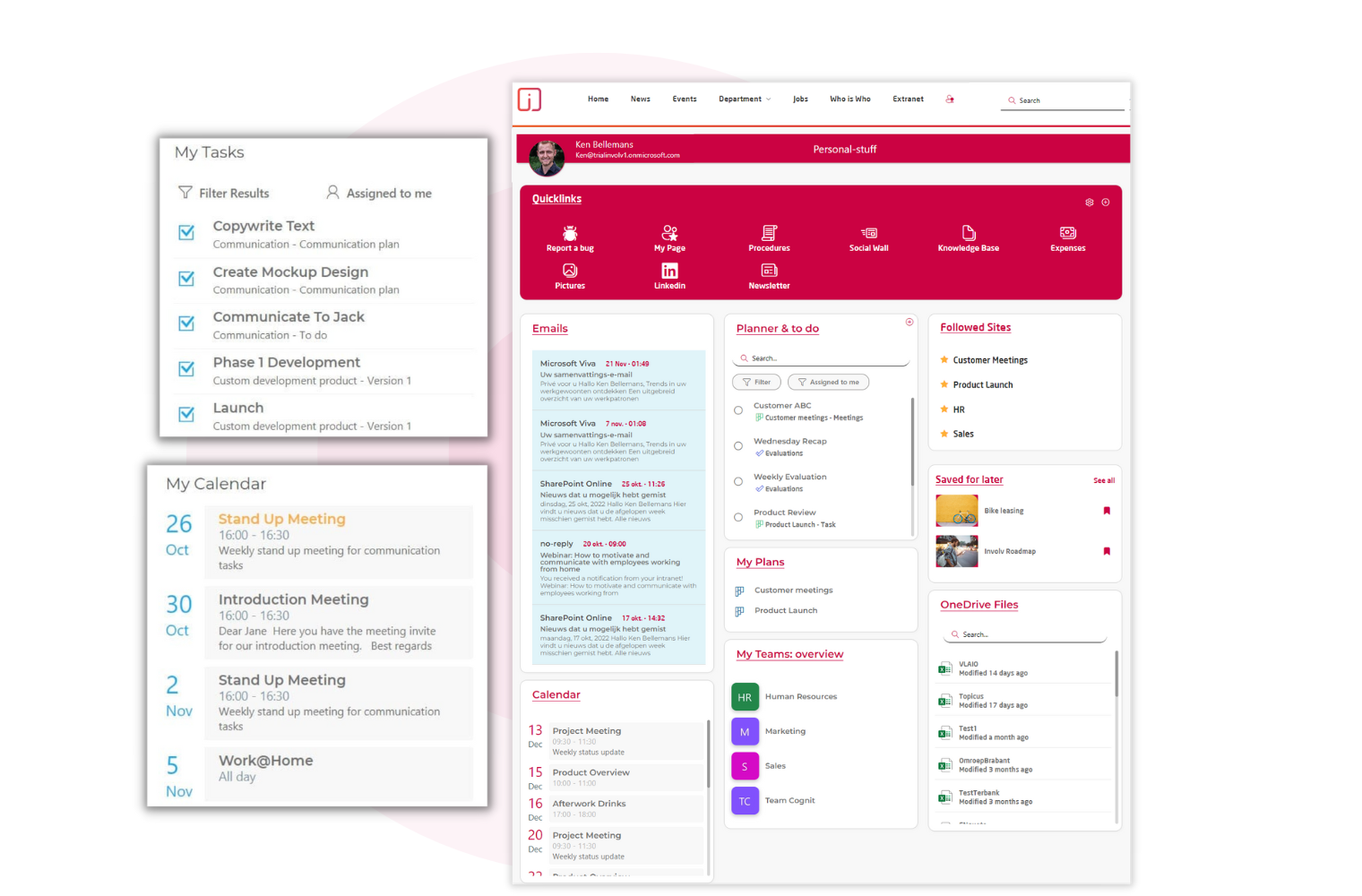Did you know that trying to find information and documents is one of the top seven workday time wasters, according to this article by Forbes?
While there are multiple ways to manage or store documents, an intranet really is the best place to house company policies and documents, business updates, events, as well as to provide a platform for employees to share ideas and feedback.
If you get the information architecture right from the start, your intranet really can be a one-stop-shop information super hub – where all your company’s important information can be stored to help employees get their job done… quickly and efficiently.
Here’s how you can use your intranet to help plug your company’s productivity gap:
1. Easy access to tools
If your organisation uses Microsoft 365, an intranet product that is built on the platform is an obvious choice.
Installing an intranet that integrates perfectly with all the Microsoft apps enables employees to access things like to-do lists, tasks, as well as shared documents keeping them in the flow of work.
If you have a more advanced intranet, you’ll benefit from further productivity gains by integrating third party solutions such as Xero, Bynder, and Zenya or practically software that has an API, so colleagues no longer have to navigate away from a central location to access the tools they need.
2. Document management
Having a central place where company documents are stored and easily accessed is an essential part of an intranet’s job.
Your intranet document management solution should make it possible for employees to create, co-edit, and share documents in an easy, fast and secure way. Plus, using search, colleagues should be able to find documents using key words, phrases, as well as authors.
3. Departmental pages
Most companies opt to create a dedicated page for each department to keep teams in the loop. Using a personalised site for every team and department means that colleagues have easy access to the information they need to do their jobs effectively. Plus, department pages are easy to find through the Mega Menu.
4. Personalised dashboards
Most intranets should offer you the ability to create personalised dashboards. These are particularly useful for colleagues so they can create their own personal home pages – adding personalised tools like Quick Links, weather and birthdays.
Employees should also be able to opt into news so that their homepage shows them content that’s relevant to them, their role, or department – helping reduce information overload.
5. Quick Links
Your intranet should have a Quick Links feature that you can add to your homepage. These can act as a launch pad for employees to access policies, health and safety tips, holiday requests, and procedures.
You should even be able to include an FAQ link to give quick and targeted replies to the top questions that keep circulating within your company.
6. Self-service apps
Using ready-made templates for the most common forms is the most efficient way to deliver key services to your employees. For example, you can ask your IT team or intranet service provider to create an expenses or time-off request app that once submitted, will automatically create an approval flow that colleagues and managers can monitor in real time.
7. Keeping up with the external world
Introducing RSS feeds into your intranet means you can share content either from yours or a third-party website. Advanced intranets even allow you to target feeds to a selected audience.
Find out how Involv’s customer Plan International Belgium is using their intranet to improve access to information:
The great thing about the Involv intranet is the ease of use. It is a layer on top of SharePoint where we have not only a good document management system but also a good communication platform. Involv offered many interesting features that we could use immediately, such as the Quick Links, the FAQ, and the ticketing. We’ve been using the platform to streamline our communications.
– STEFAAN VAN BOSSUYT, ICT Officer, @ Plan International Belgium
Find out how Involv can provide the tools for creating an information super hub, as well as the solutions to internal comms’ biggest challenges, like building a workplace community and facilitating collaboration, by downloading our ebook.
Or why not book a demo with one of our intranet expert.

Free Ebook
Overcoming the Challenges of IC:
Lessons from practitioners
Lessons from practitioners



